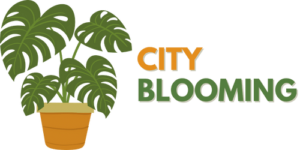5 Easy Facts About City Blooming Described
5 Easy Facts About City Blooming Described
Blog Article
Things about City Blooming
Table of Contents6 Easy Facts About City Blooming DescribedFacts About City Blooming RevealedCity Blooming - The FactsGetting The City Blooming To WorkWhat Does City Blooming Mean?
Fascinated in growing food to buy in the City of Chicago? Thinking of starting a community yard? Adjustments to the Chicago Zoning Ordinance permit farming uses like area yards and metropolitan ranches in lots of parts of the city. Below is a checklist of regularly asked concerns regarding the regulations and policies that farmers should take into consideration when preparing an urban farming project.
The zoning change does not modify any kind of other codes dealing with composting, structure permits, buying or renting City had residential property, business licenses or environmental contamination. There are existing codes that regulate these problems and they continue to be in complete effect and may be suitable to your project. Community gardens are generally possessed or taken care of by public entities, civic organizations or community-based organizations and kept by volunteers.
Urban farms expand food that is planned to be sold, either on a nonprofit or for-profit basis. Due to their business purpose, city ranches call for an organization certificate. Yes. A neighborhood yard is enabled to market excess create that was grown on website if the sales are accessory or secondary to the garden's primary purpose defined above.
Getting My City Blooming To Work
Composting is enabled but just for plant material that is generated and used on website. The quantity of garden compost material can not exceed 25 cubic lawns at any type of given time according to the requirements in 7-28-715 of the City's Municipal Code. Yes. Due to the fact that the soil at a lot of new yard websites requires amending, garden compost, soil, timber chips, or other products can be gotten to create or improve the growing room - sustainable gardening.

If a structure permit is called for then the hoophouse will certainly be taken into consideration an accessory building. You can learn even more regarding the building license demands by speaking to the Department of Structures. The 25,000-square-foot size restriction is intended to avoid a solitary community yard from dominating a provided block or interfering with the block's existing residential or industrial personality.
The limitation does not relate to yards situated in Public Open Room (POS) districts. Can there be even more than one community garden that is 25,000 square feet on a solitary block? Yes. The size restriction relates to individual yards, not to individual blocks. No. Fencing is not required, however, yards that have big parking areas might be required to mount fencing or other landscaping features.
Some Known Details About City Blooming
B1 & B2 areas require that all business use activities be conducted indoors. R areas restrict commercial task. The laws mirror the purpose and over here intent of the Zoning Code. Is secure fencing needed for urban ranches? Yes. Fencings might be required, together with landscape design and screening, for particular parking lot and exterior work or storage areas depending on area and the particular activity happening.
Yes. Urban ranches call for structure licenses and zoning authorizations prior to construction. Various other kinds of city evaluation might be called for depending upon particular frameworks, tasks, size, landscape design, licensing, public health and stormwater administration concerns. Much of these needs are determined in the job design or allowing procedure, nonetheless, the applicant may be accountable to independently identify certain licenses or allows that may be called for.
The Department of Service Matters and Customer Security can assist establish the details kind of service license that's needed. Off road car parking is required for most industrial projects in Chicago. The required number of auto parking areas is based on the number of employees functioning on website and not the square video of the expanding area.
Everything about City Blooming

A metropolitan ranch can market compost product produced on site, nonetheless, the operation has to comply with the regulations in 7-28-715 of the Chicago Municipal Code. Aquaponic systems are allowed indoors on metropolitan farms in numerous zoning areas.
Approximately 5 hives or nests of honey might be kept as an accessory use. However, beekeepers should register with the Illinois Department of Farming. For more details regarding the suggested zoning amendment you may get in touch with the Department of Housing and Economic Advancement, Bureau of Preparation and Zoning at 312.744.8563.
, which takes place in country locations at the edge of suburban areas.
3 Easy Facts About City Blooming Explained
, who seek to form social networks started on a shared principles of nature and neighborhood holism. These networks can establish by method of formal institutional assistance, becoming incorporated right into regional community planning as a "transition town" activity for sustainable urban advancement.
Some of the first evidence of metropolitan agriculture comes from Mesopotamia.
Report this page